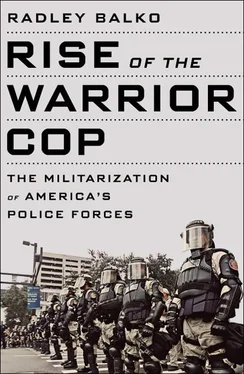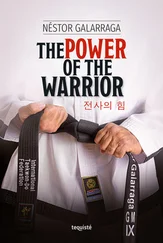But until the 1970s, the government couldn’t take property that wasn’t directly used in a crime. The government could shut down an illegal brothel, but it couldn’t touch a house or car or boat the owner had bought with revenue generated by the brothel. That all changed when a young policy wonk named Robert Blakey, formerly of Robert F. Kennedy’s Justice Department, conceived of a way to extend the government’s reach. Under Blakey’s idea, once the government convicted someone on charges related to organized crime, prosecutors could go after everything the guilty party had bought and earned with the proceeds of the criminal enterprise.
Blakey called the law RICO (Racketeering Influenced and Corrupt Organizations), after Rico Bandello, the fictional gangster in the 1931 movie Little Caesar . Originally conceived to target organized crime, by the time the law passed in 1970 it had become so broad that even Nixon’s hard-liners were concerned. In opposing the law, Nixon’s Justice Department told Congress that its broad reach “would result in a large number of unintended consequences.” 2
Reagan’s Justice Department had no such reservations. The 1981 GAO report concluded that the government wasn’t using forfeiture nearly enough, and that an excellent opportunity to collect revenue was going to waste. Reagan’s people would take care of that.
Reagan also brought in the FBI to help enforce the drug laws. The agency had long resisted joining the drug war, particularly under J. Edgar Hoover. The legendary PR-savvy director knew the issue was a loser and tended to lure law enforcement into corruption. But by 1980 Hoover had been gone for seven years. It was time to bring the FBI into the fold.
The new administration also wanted to do away with the Exclusionary Rule, override Miranda , abolish bail and parole, douse pot farms with herbicides, put far more focus on enforcement and far less on treatment, and, perhaps most radically of all, enlist the military in the war on drugs.
The administration would focus most of these efforts on marijuana, on the theory that (1) marijuana is a “gateway” to harder drugs, and (2) people using cocaine and heroin are already too far gone to bother saving. There was also a strategic advantage to going after pot: successfully targeting and demonizing the least harmful illegal drug would push any talk of decriminalizing the others outside the realm of acceptable debate.
But if this was going to be a real war, Reagan would need to secure his role as commander in chief. He couldn’t have Congress or rogue bureaucrats going off-message or questioning or holding up his initiatives. Here again, he took a play from Nixon’s playbook. Reagan created a new office—a more czar-ish sort of drug czar. The position would report directly to him and would coordinate and oversee all antidrug efforts throughout the executive branch.
At the suggestion of billionaire data-processing mogul and future presidential candidate H. Ross Perot, Reagan chose Carlton Turner to be his new, even czar-ier drug czar. Turner was a native Alabaman who, oddly enough, had spent years running the country’s only legal marijuana plot, at the University of Mississippi. That experience with pot gave Turner a convincing air of authority that would become particularly important when he started making patently absurd statements about the drug. Turner had no specialized knowledge of other illicit drugs, but that didn’t matter much at the time. Pot was really all that was important.
By the time Reagan publicly announced the appointment in June 1982, Turner was already a favorite among the increasingly dogmatic anti-pot parent organizations proliferating in the suburbs. His appointment was also an early indication that the federal government’s new drug war would no longer pay much attention to treating addicts. In previous administrations, the “drug czar” had been a treatment-oriented position. Under Turner, it became an enforcement office.
Underlying all of this focus on pot was a surge of cultural conservatism into positions of power in the new administration. The late 1960s and early 1970s had seen the emergence of a movement of conservative intellectuals. Periodicals like Commentary, The Public Interest , and occasionally National Review were featuring think pieces from people like Robert Bork, Ernest van den Haag, James Q. Wilson, and James Burnham. Where someone like George Wallace openly appealed to base prejudices, and the Moral Majority might openly cite the Bible as an authority when discussing public policy, the right’s emerging tweed caucus intellectualized the culture wars. They made essentially the same points that Nixon political strategists had made among themselves in memos and behind closed doors, only with more erudition, and more for public consumption. Their general message was that some people are simply “born bad” and there’s just no helping them. Talk about root causes, social intervention, or curing or rehabilitating deviancy was a futile attempt to debate away evil. Rioters, drug pushers, drug addicts, career criminals—these people were beyond redemption. The only proper response to evil was force—and then only to keep the evil from harming the good. These ideas found a home in the Reagan administration, where many of the people who had been advancing them found high-ranking appointments.
Nixon had figured out that drugs were the common element among all of his culture war enemies. Reagan’s people took that idea and ran with it. Carlton Turner’s focus on pot was a way to rekindle the culture war. In a revealing early interview with Government Executive magazine, Turner lumped pot with rock music, open and abundant sex, and ripped jeans. Drug use, Turner warned, was “a behavioral pattern that has sort of tagged along during the present young-adult generation’s involvement in anti-military, anti–nuclear power, anti–big business, anti-authority demonstrations.” People engaged in this behavior, he explained, “form a myriad of different racial, religious or otherwise persuasions demanding ‘rights’ or ‘entitlements’ politically,” while scoffing at civil responsibility. At a 1981 meeting with his staff, Turner laid out his office’s mission: “We have to create a generation of drug-free Americans to purge society.”
There would be little tolerance for dissent. Turner was especially determined to purge psychiatrists from federal drug agencies. “They’re trained to treat,” he said, “and treatment isn’t what we do.” Methadone was out, so Turner blocked advocates of the treatment who were still in the federal government from speaking about it publicly. He took on the public health crowd at the National Institute on Drug Abuse (NIDA), working to rid the agency of officials and researchers who advocated a treatment-oriented federal drug policy. In 1982 a Turner ally at the agency sent a letter to libraries across the country urging them to pull and destroy sixty-four prior NIDA publications he’d found that included information that was inconsistent with the new narrative about drugs. In one particularly brilliant piece of propaganda, drug warriors argued that one of the symptoms of marijuana addiction was “refusal to believe the hard medical evidence that marijuana is physically and psychologically harmful.” Questioning the drug war was in and of itself a sign of addiction.
Reagan himself delivered the stridently moral message better than anyone. In a 1982 speech to a convention of police chiefs in New Orleans—his first major crime speech after inauguration—Reagan claimed that a recent study had found that just 250 criminals were responsible for half a million crimes over the course of eleven years. That boiled down to a crime every two days. That may have been possible if all the criminals in the study were drug users and the researchers counted drug use as a crime. But the statistic was given in the context of the harm that criminals do to society. It doesn’t appear that Reagan ever sourced the study, but the notion that a team of researchers just happened to find 250 criminals with that sort of dedication seems unlikely.
Читать дальше












